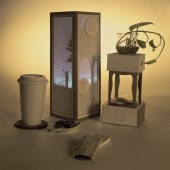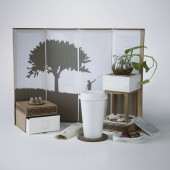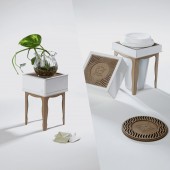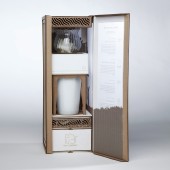
| THE AWARD |
| CATEGORIES |
| REGISTRATION |
| SUBMIT YOUR WORK |
| ENTRY INSTRUCTIONS |
| TERMS & CONDITIONS |
| PUBLICATIONS |
| DATES & FEES |
| METHODOLOGY |
| CONTACT |
| WINNERS |
| PRESS ROOM |
| GET INVOLVED |
| DESIGN PRIZE |
| DESIGN STORE |
| THE AWARD | JURY | CATEGORIES | REGISTRATION | PRESS | WINNERS | PUBLICATIONS | ENTRY INSTRUCTIONS |
Pu'er Tea Packaging Collection Tea Collection by LIQI LIU |
Home > Winners > Design #25483 >Interview |
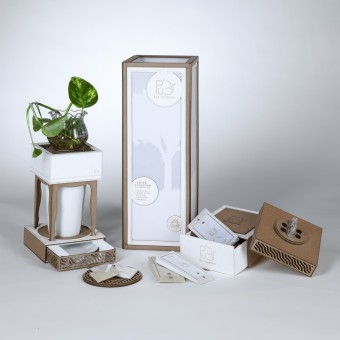 |
|
FS: What is the main principle, idea and inspiration behind your design?
LL: Taoism is the main principle. Taoism is not a religion, not just a philosophy. It is a "Way" of life. It is a force or a energy that flows through every living and sentient object, as well as through the entire universe. Tao is the natural order of things. Conversion of opposites is a cycle and repeat process, and balance of the opposites is harmonies of the universe that is arround us.
FS: What has been your main focus in designing this work? Especially what did you want to achieve?
LL: "The closer you stay to nature, the more you will appreciate her beauty." Based on the main philosophy of Pu'Er Tea Company — the relationship between human and nature, human and environment, which is also a theme of Chinese tea culture, this project focused on making people closer to the nature. In order to match the philosophy of Pu’Er Tea Company, the design is simple & clear, organic & healthy, recyclable & reusable, and multifunctional design.
FS: Why did you design this particular concept? Was this design commissioned or did you decide to pursuit an inspiration?
LL: In this century, design as one of the most important and dynamic artistic creation is being given an important responsibility to interpret and improve human society, culture, and environmental conditions. Face to the current worldwide issues like the environmental degradation problems, the overpopulation questions, and economic depression issues, environmental protection and conservation are becoming new human needs. Therefore, design tends to be sustainable, recyclable, and reusable.
FS: What made you design this particular type of work?
LL: Nowadays, busy work and hard life make people stressful and tried, especially someone who work indoor, such as office workers. Most of time they stay far away from nature, the sunshine, the fresh air, and the green. They become sensitive, nervous and unhealthy. I was searching the way to make people closer to the nature.
FS: Where there any other designs and/or designers that helped the influence the design of your work?
LL: The influence is from the concept of Prof. Scott Boylston about sustainable packaging design. Also, Design Ethos hold every year at my college. I learn a lot from many professional conferences and workshops.
FS: Who is the target customer for his design?
LL: Office Workers, Soho People, Computer Users, Male & Female, 18~60ages
FS: How did you come up with the name for this design? What does it mean?
LL: Pu-er is a name of a type of Chinese tea. I choose this type of tea which is popular in urban people because people can also feel such a kind of humanistic atmosphere when they drink tea. Tea is the national drink in China. The Chinese people, in their drinking of tea, place much significance on the act of “savoring.” “Savoring tea” is not only a way to discern good tea from mediocre tea, but also how people take delight in their reverie and in tea-drinking itself. Snatching a bit of leisure from a busy schedule, making a kettle of strong tea, securing a serene space, and serving and drinking tea by yourself can help banish fatigue and frustration, improve your thinking ability and inspire you with enthusiasm. You may also imbibe it slowly in small sips to appreciate the subtle allure of tea-drinking, until your spirits soar up and up into a sublime aesthetic realm.
FS: What is the most unique aspect of your design?
LL: During the process, I feel I am not only a graphic designer, but I also played the roles of an architect and a furniture designer. I tried my best to save the space and keep the structure of packaging balanced and solid like building an architecture or making an furniture.
FS: What is the role of technology in this particular design?
LL: Technology is an important part in this particular design. Computer and industry technologies are multiple and convenient. However, most of them are not eco-friendly. We still need to carefully consider our selection and choice.
FS: Is your design influenced by data or analytical research in any way? What kind of research did you conduct for making this design?
LL: My research of this project is also about tea. For example: why people get used to drinking tea? There are several kinds of answers: 1, For sacrificing, the earliest sacrifice was vegetable or some eatable plants, later, people found it was harmless and good for health, and then it became the beverage of human being. 2. From Herb Experiment, the tea originally was used by human being as a kind of herb medicine. 3. Tea was part of human being’s daily diet. Drinking tea is good for health. Drinking tea can relieve the caducity. Drinking tea is helpful for restraining angiocardiopathy. Drinking tea can prevent the cancer. Drinking tea is useful for presenting and curing the injury from radiation. Drinking tea is helpful for resisting and restraining the virus. Drinking tea is also useful for skin care and refreshment. Drinking tea is beneficial for fat digesting. And drinking tea is also good for teeth and eye care.
FS: What are some of the challenges you faced during the design/realization of your concept?
LL: The creative challenge is how to design the structure of whole package which could save space and be statable, and the obstacles are searching the recyclable materials and methods which make the case and the boxes reusable and design multifunctional.
FS: How did you decide to submit your design to an international design competition?
LL: I intend to seek my self-confidence and acceptant my study in the USA from this international design competition. Also, this is an attempt to make a sound to the world for Chinese designers and citizens about our environmental consciousness in contemporary content.
FS: What did you learn or how did you improve yourself during the designing of this work?
LL: Practice is the sole criterion for testing truth. In this project, I learn how to use my design concept and practical activity to support the theory and philosophy I believe.
FS: Thank you for providing us with this opportunity to interview you.
A' Design Award and Competitions grants rights to press members and bloggers to use parts of this interview. This interview is provided as it is; DesignPRWire and A' Design Award and Competitions cannot be held responsible for the answers given by participating designers.
| SOCIAL |
| + Add to Likes / Favorites | Send to My Email | Comment | View Press-Release |

